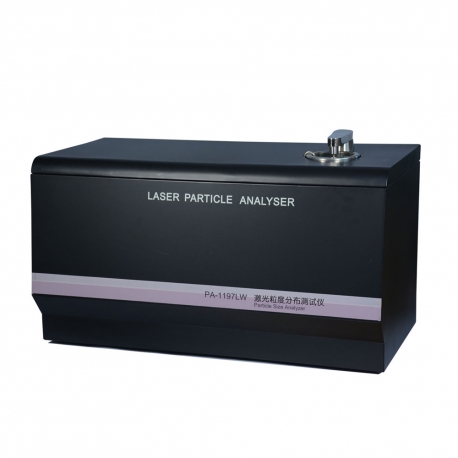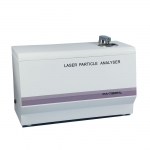Nano Laser Diffraction
- Products
- Petroleum & Oil Testing
- Tablet Drug Tester
- Refrigeration & Cryogenic
- Life Sciences
- Laboratory
- Spectrometer
- Spray Dryer
- Rotary Evaporator
- Reactor
- Sterilizing & Cleaning
- Water Quality Analyzer
- Chemical Analysis
- Physical Testing
- Centrifuge
- Pathology Equipment
- Optical
- Ultrasonic Homogenizer
- Packaging Testers
- NDT
- Agriculture & Food
- Hazardous Chemical Detection
- Fusion Machine
- Testing Chamber
- Filter Integrity Tester
- Industry Testing Device
- Featured
More info
PA-1197LW wide-range laser particle size analyzer completes all technical features of PA series products and innovates and breaks through the use of laser particle size instrument functions. It can test both nanometer and micron powder. It is the first instrument in the world to be used separately. Photon correlation spectroscopy and full-range Mie scattering are used to test the two principles. The two test functions require only one key to quickly switch in a few seconds.
Application area
Scientific research institutions, electronic materials, inks, pigments, polymer latex, coatings, papermaking, chemicals, ceramics, manganese carbonate, pesticides, medicine, coal water slurry, cosmetics, abrasives, food, calcium carbonate, talc, kaolin, alumina , Rare earth, magnesium powder, catalyst, foaming agent, refractory, cement, graphite, marine sediment and other industries, particle size distribution test of solid powder, emulsion slurry.
Technical Parameters
Item | Specifications | Item | Specifications |
Measuring range | Nano section:1nm~10000nm | Measuring range | Micron segment:0.01μm~3000μm |
Repeatability error | ≤1%(National standard material D50 deviation) | Repeatability error | ≤1%(National standard material D50 deviation) |
Static detection cell | Volume 2.5 mL | Sample dispersion cell | Volume 500mL,Material: 304 full stainless steel |
Injection method | Fully automatic and non-circulating injection systems | detector | 128-level multiple detector |
Signal light source | Imported semiconductor laser, high gain and low noise photomultiplier tube | Laser life | More than 70,000 hours |
Light path system | Inverted Fourier optical system, forward scattering | Working power | AC220V ±22V 50Hz ±0.5Hz: |
The report shows
Software operation interface can choose Chinese or English as required. Multiple report forms: free distribution, normal distribution, RR Distribution, etc. Content includes cumulative particle size distribution data and curves, interval particle size distribution data and histograms, typical particle size values such as D3, D10, D25, D50, D75, D84, D90, D97, volume average particle size and area average particle size and specific surface area And other data.
Instrument advantages
- Using an inverted Fourier optical system, a large single-beam lens and a combination lens, greatly reducing the stray light caused by multiple reflections of the sample cell and the optical mirror surface, and large-angle scattered light is not limited by the lens aperture, which effectively improves Test resolution.
- 128-level multi-element detector, high-gain low-noise photomultiplier tube, dual-source pipeline detection completes the reception of forward, side, and backscattered signals.
- The original polydispersity analysis algorithm can quickly analyze polydisperse and monodisperse particle systems. It has the ability to test the mass concentration and relative concentration of nano samples, and directly measures the sample temperature in real time, avoiding the temperature gradient caused by the sample pool and constant temperature system Measurement error.
- Using high-quality optical glass, a 2.5-mL thin-slit detection cell is customized for valuable samples. It has the mass concentration and relative concentration for testing nano-samples, and has two automatic sampling systems: non-circulating and non-circulating. Especially for trace precious samples, non-recycling can be adopted. The samples can be recovered directly after testing.







